A gull in flight is simple beauty.
Ring-billed (Larus delawarensis), Herring (Larus smithsonianus), Great Black-backed (Larus marinus), Bonaparte’s (Chroicocephalus philadelphia), Laughing (Leucophaeus atricilla), Heermann’s (Larus heermannii)—there are dozens.1
I vaguely remembered reading “simple beauty” as a description of gulls in E.B. White’s One Man’s Meat. To make sure I wasn’t misremembering, I revisited it.
Page 73. White raises
a baby seagull [which] eats twice his own weight in food every ten minutes…if he doesn’t get it he screams.
His favorite dish is chicken gizzards chopped with clams, angle worms, and laying mash.

He has eaten ten thousand clams—of my own digging—and still screams accusingly every time I go by.
A mature gull in flight is simple beauty.
Some day this child of mine is going to be stretching his wings and a gentle puff will come along and he will take off. The pleasure of seeing my worms and gizzards translated into perfect flight will be my strange reward.
We are surrounded by beauty, even if easy to miss.



A white oak (Quercus alba); the bark of a paper birch (Betula papyrifera); pincushion moss (Leucobryum glaucum); sensitive fern (Onoclea sensibilis).
And of course, gulls—particularly in flight.
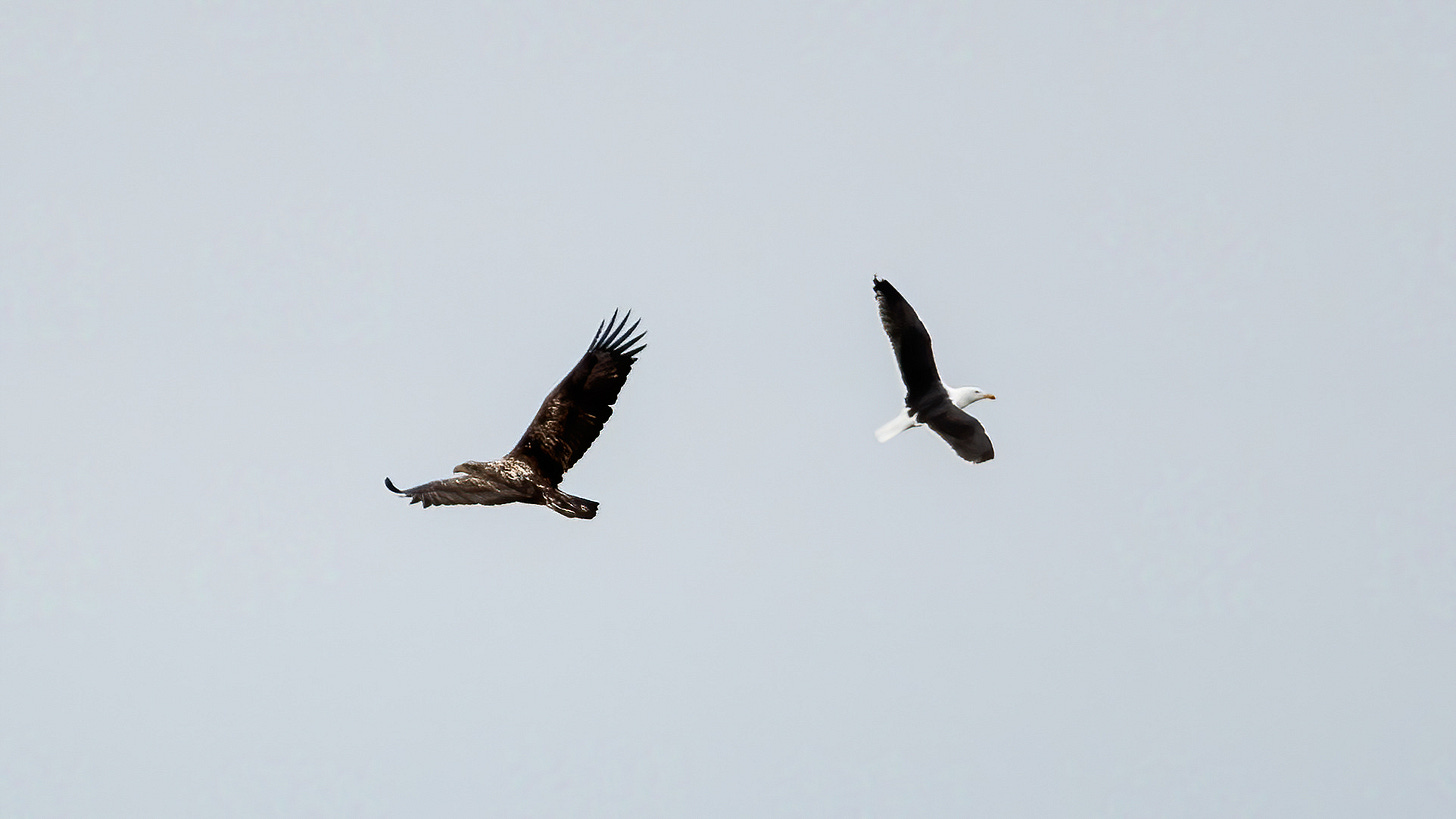
Lawrence Kilham’s “On Watching Birds” opens:
When I spoke to a scientific colleague about a sense of beauty, he said there is no such thing. Some people think a factory chimney is beautiful, and others think it is the opposite. For my part I think a sense of the beauty of nature is innate.
The beauty of a gull in flight is innate. Gulls get a bad rap but they take beautifully to the wing, in perfect flight.
Nothing about a gull is haphazard.
Think of a gonydeal spot, the bit of red on the bills of some gulls.
Parent gulls return to nests with food in their stomachs; their young see the red on the bill and peck at it. The bill is sensitive, the parent regurgitates.
A gonydeal spot is a helpful way of differentiating Herring (Larus smithsonianus) from Ring-billed Gulls (Larus delawarensis). Ring-billed don’t have one.
Herring Gulls get a gonydeal spot when breeding adults. Not all Herring Gulls have one. Audubon says2 these birds have a “blackish bill at first.” An immature’s can be all black or just at the tip. This can make it look like a Ring-billed.
Herring aren’t the only gulls with entirely or partially black bills when immature. Take Great Black-backed (Larus marinus) or Western (Larus occidentalis).
Any nonadult gull qualifies as immature; within “immature” there are many categories—juvenile, first winter, etc. This source on winter gull ID is helpful; so is this, from Sibley, about American Herring Gulls.
The plumage a bird gets after first fledging is its juvenile plumage. October to April is first winter, first summer is April to August; August to April is second winter, so on.
Species often go into adult plumage in the third winter. Within adult plumage there’s breeding and non-breeding.
Per Audubon’s The Birdist,
Most adult white-headed gulls have yellow bills with some additional coloring. Many species have red or black spots on the lower part of the front of the bill, called a gonydeal spot. Adult ring-bills, however, don’t have a spot, they’ve got a clean black band towards the tip of the bill, surrounded by yellow…If you see a gull with red on its bill, it ain’t a ring-billed.
Aside from a gonydeal spot there are other ways to tell a Herring from a Ring-billed. Pink legs, heavier bill. A Ring-billed is smaller; matures have yellow legs—though they are pink the first two years.
The simplest way to differentiate these two species is overall size. The Cornell Lab describes Herring as “robust” and explains: “In flight, they look barrel-chested and broad-winged compared to smaller species such as Ring-billed Gulls,” which are described in another article as “delicate by the standards of the larger gull species.”
The simple beauty of a gull in flight is not hard to find. Seeing a bird often is an invitation to know it well, but coming to know a bird well can be frustrating.3
Gulls are:
notoriously difficult to identify. Entire books have been dedicated to telling one gull from another, but even these barely scratch the surface. Their plumage changes as they age and there's a great deal of variation within species.
Gulls Simplified opens:
Ask any bird-watcher to name the bird group that is most intimidating…they often shout: “GULLS!”
Pointing out a Glaucous Gull (Larus hyperboreus) lacks the wow factor of pointing out a Magnolia Warbler (Setophaga magnolia), but simple beauty compounds the closer you look.
I love overlooked birds, like gulls and ducks.

It doesn’t take much to recognize a Scarlet Tanager (Piranga olivacea) is pretty. But a Bonaparte’s Gull (Chroicocephalus philadelphia)?
Beauty is all around us, sometimes where you’d least expect—like a “seagull” or a duck.
Green-winged Teal (Anas crecca), Ring-necked Ducks (Aythya collaris), and Barrow’s Goldeneye (Bucephala islandica) get all the credit, but is a Mallard (Anas platyrhynchos) unremarkable?
Definitely not. That green head! Blue speculum! It lacks the species cache of a Northern Shoveler (Spatula clypeata) or a Harlequin (Histrionicus histrionicus), but who cares?
If a gull in flight is simple beauty, there are many forms of simple beauty we overlook. A Mallard, moss on the floor of a trail, the sun kissing a field, the moon.
Stop, or at least slow down. Be grateful to share the world with beauty. Water clinging to a melting icicle. The way something interacts with sunlight, moonlight, starlight, candlelight. The white on a duck’s head—Hooded Merganser (Lophodytes cucullatus) or Bufflehead (Bucephala albeola). Simple beauty.
Beauty does not require dissection. Maybe something is simply beautiful because it’s just that: simply beautiful.
Recommended Reading:
“Some of my favorite encounters with American Herring Gulls are when they are bravely harassing raptors. I’ve seen them chase after Bald Eagles and Short-eared Owls with vigor, often dangling their pink feet in a questionable show of intimidation.”
“This was my first Cooper’s Hawk of 2025. A few moments before the hawk had landed in this pine tree, they had been chasing a Pileated Woodpecker.”
“…Blue Grouse. I mean Dusky Grouse. Or was it Sooty? Whatever. Gram saw it. Gramp didn’t. So in a lifetime of birding together, how did that happen? I’m afraid for now it remains a mystery.”
“Everything about an icicle is an ephemeral freeze-frame on the boundary between two worlds.”
“My grandparents would never have met if it wasn’t for a tiny bit of coppiced woodland in Surrey, and that land would never have known our footprints if my great-great grand-uncle hadn’t died in a freak toboggan accident.”
“…it’s been my experience over many years of practice, that to slow down—to communicate with a level of vulnerability and care—can be a radical act of kindness. And counter-intuitively, it can also save time by replacing miscommunication with clarity. Fear with trust.
This is true not only of how we speak, but how we listen, empathize, and connect.”
Over 50 species. I always think when I read this part: Are you just not gonna say Little (Hydrocoloeus minutus) or Ross’s (Rhodostethia rosea)? Iceland (Larus glaucoides), Glaucous (Larus hyperboreus), Glaucous-winged (Larus glaucescens); Franklin’s (Leucophaeus pipixcan), Black-headed Gull (Chroicocephalus ridibundus), or Black-legged Kittiwake (Rissa tridactyla)? I wrote about Lava Gulls (Leucophaeus fuliginosus), but no mention. So many wonderful gulls.
Lava Gull
The Galapagos Islands have many birds. Flightless Cormorant, Phalacrocorax harrisi; Large Ground Finch, Geospiza magnirostris; Galapagos Hawk, Buteo galapagoensis. One species endemic to the Galapagos stands out. …
Audubon’s Herring Gull page is for Larus argentatus rather than smithsonianus.
None of these IDs were outlandish. I feel confident. As with any bird ID, particularly gulls, please feel free to correct me.





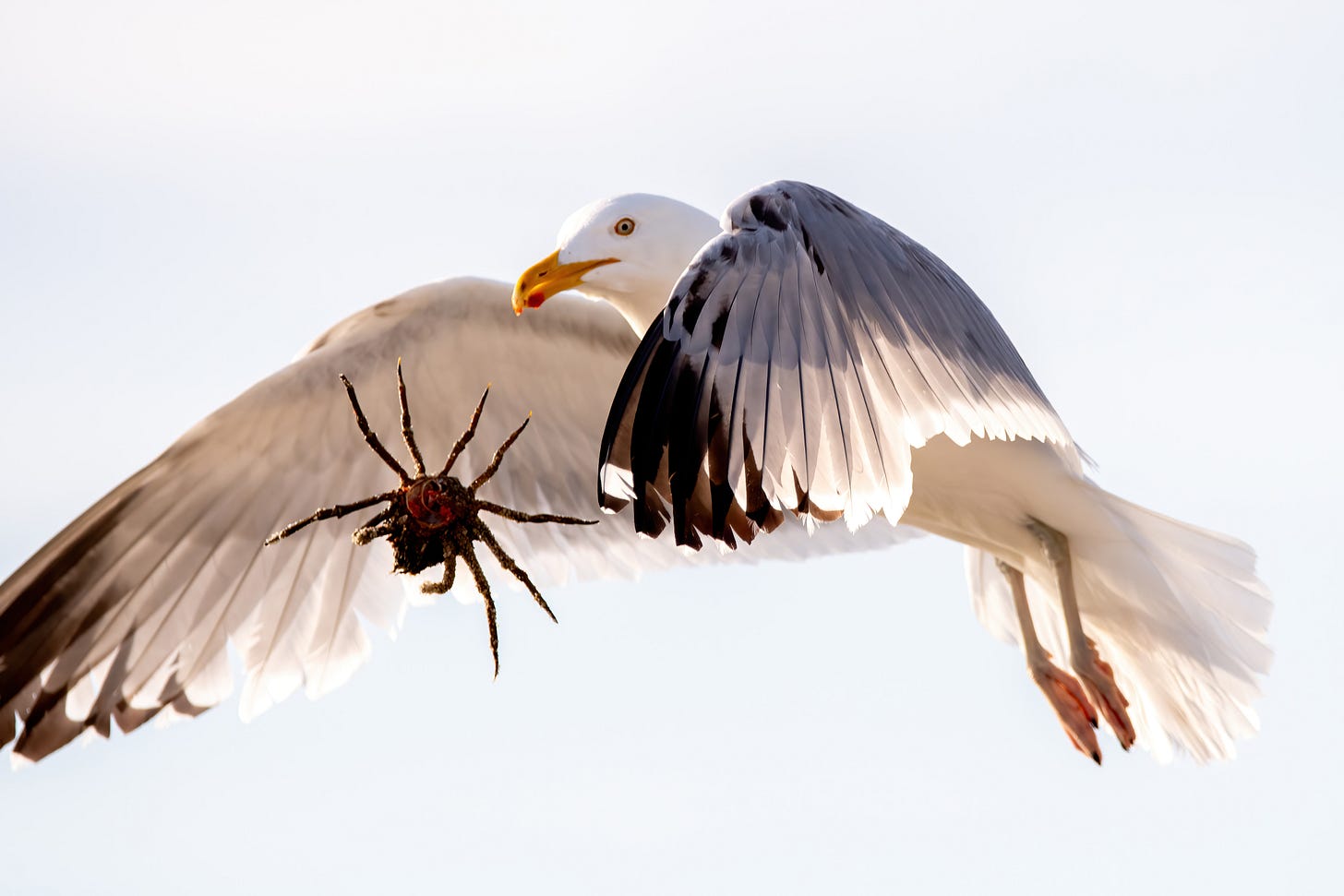


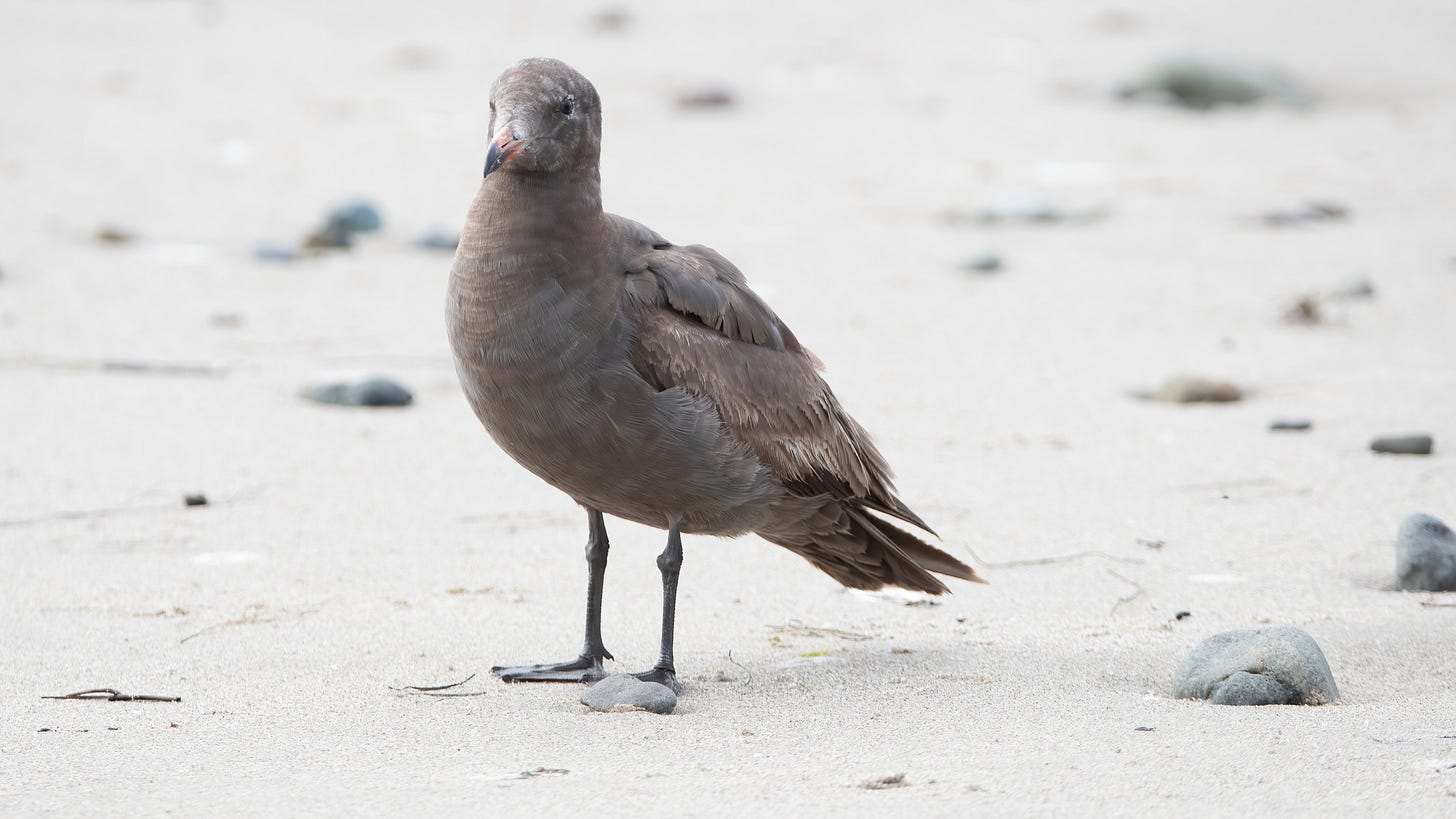
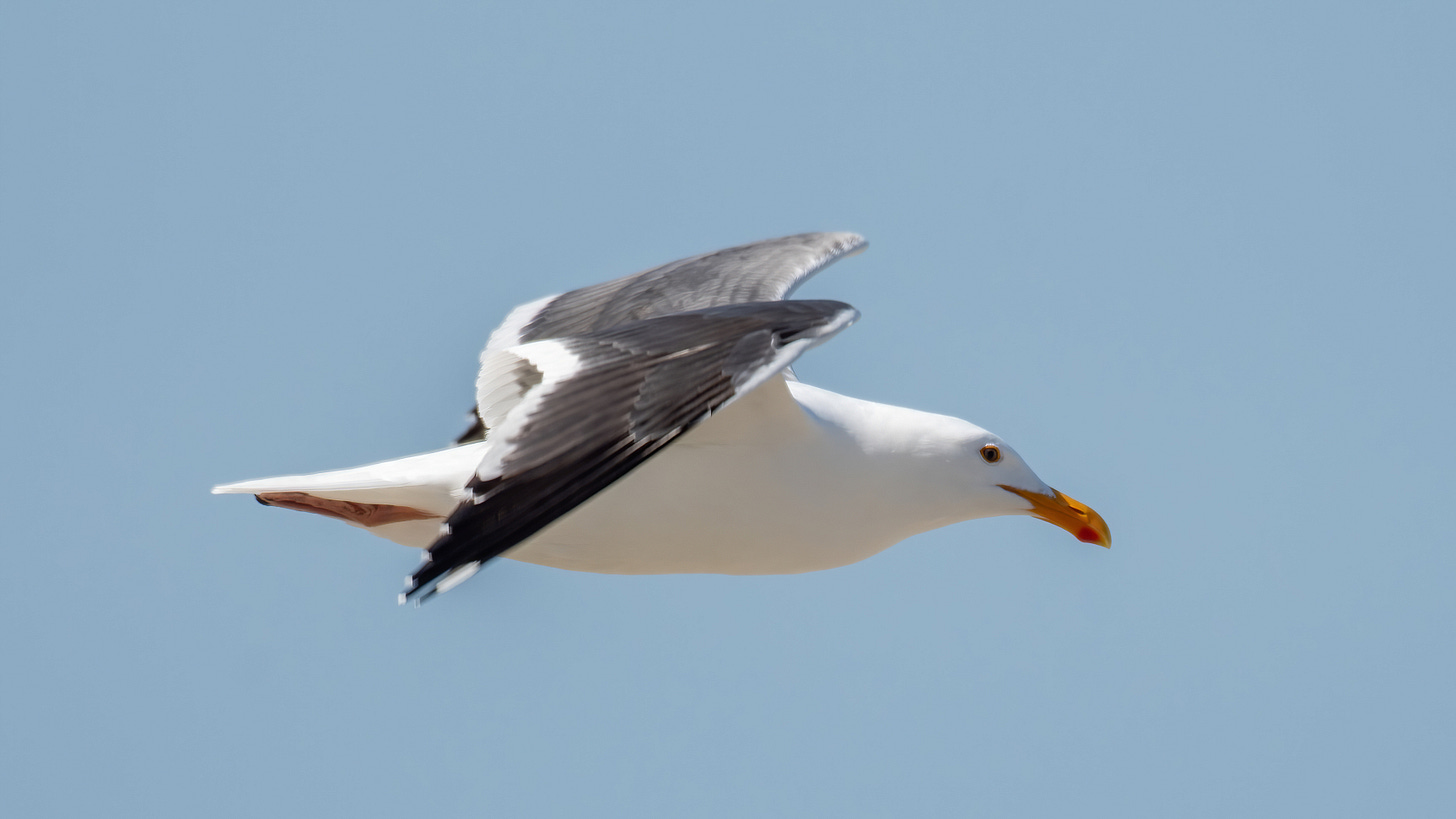





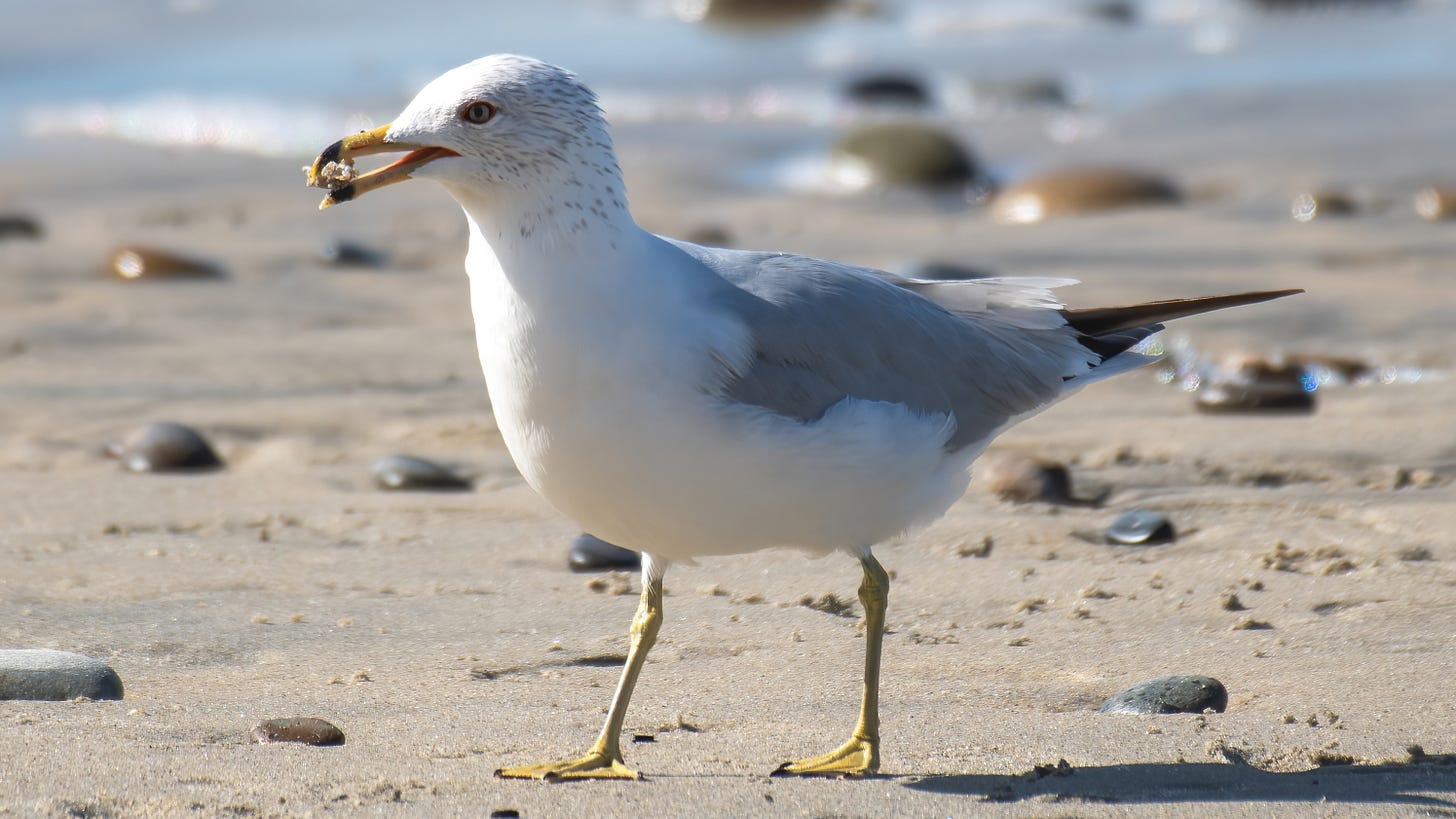
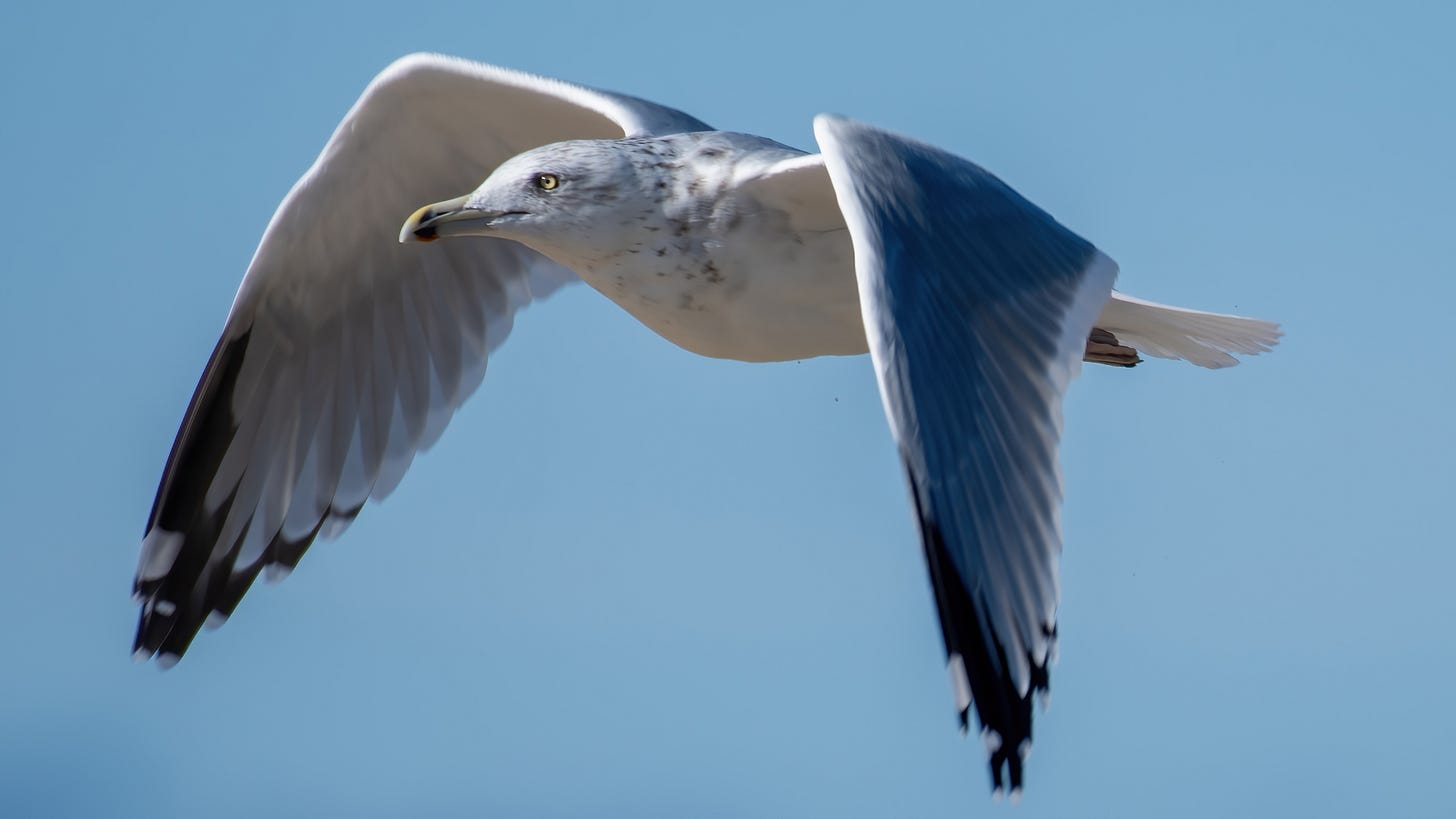
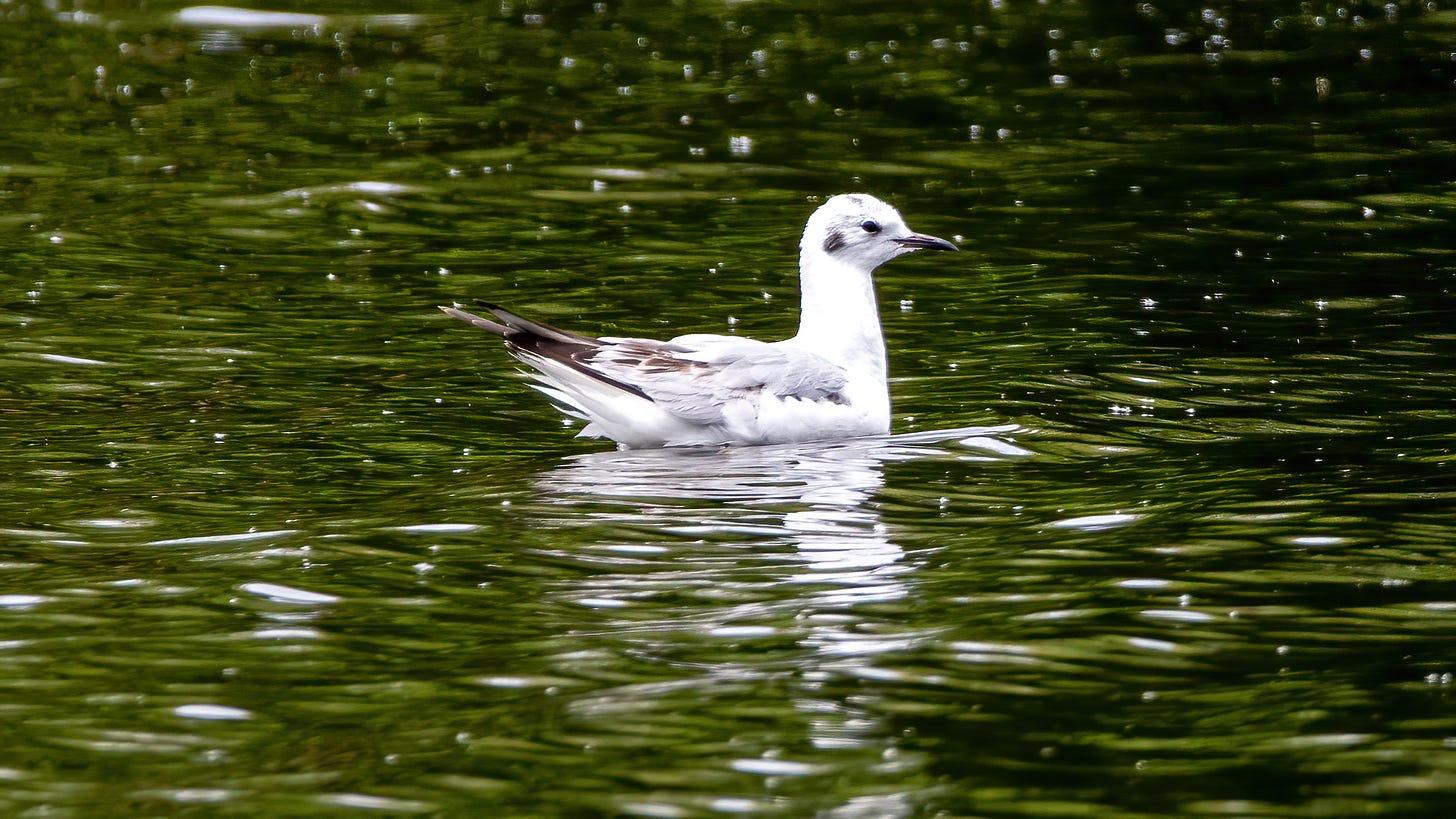

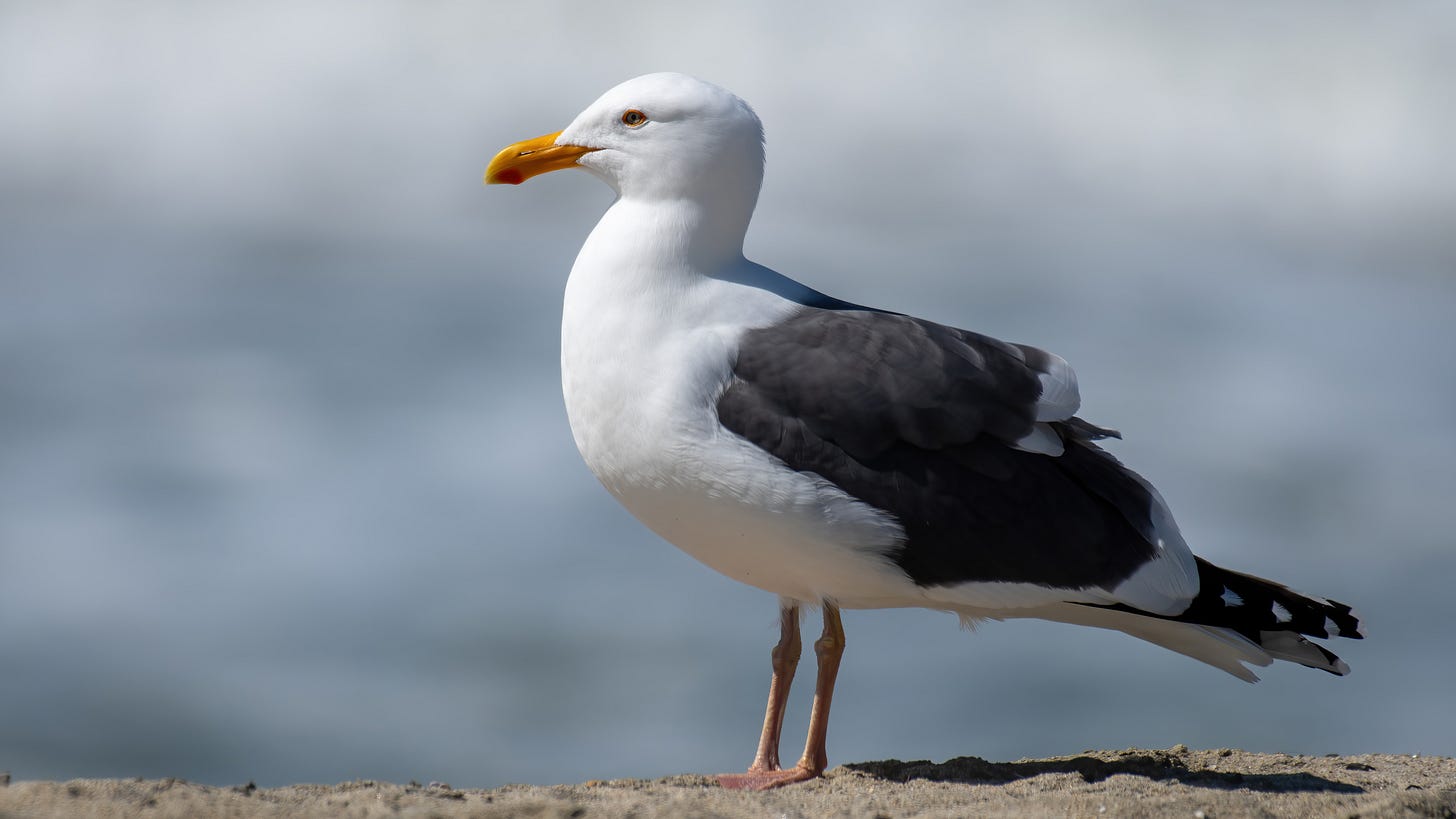

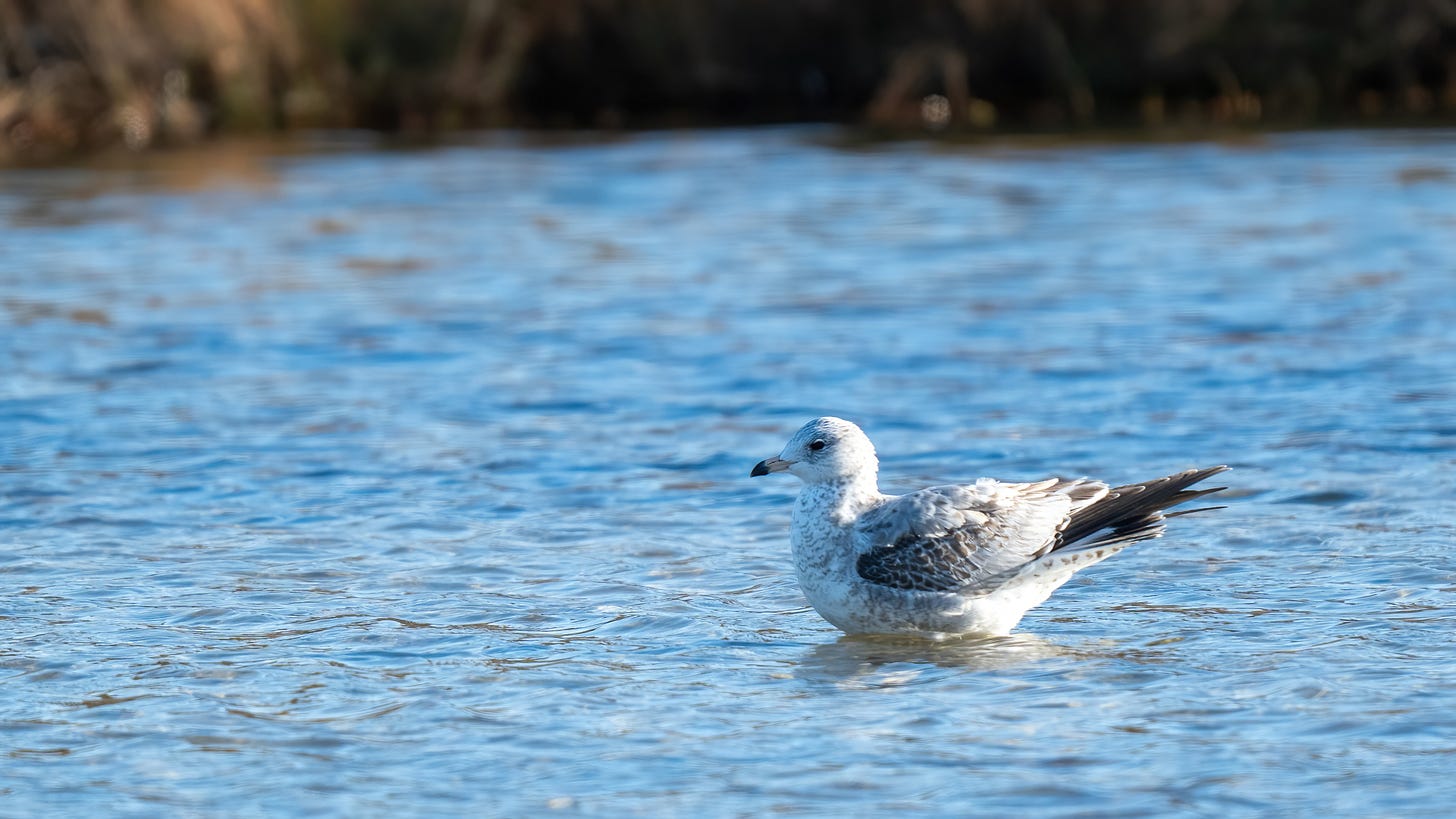
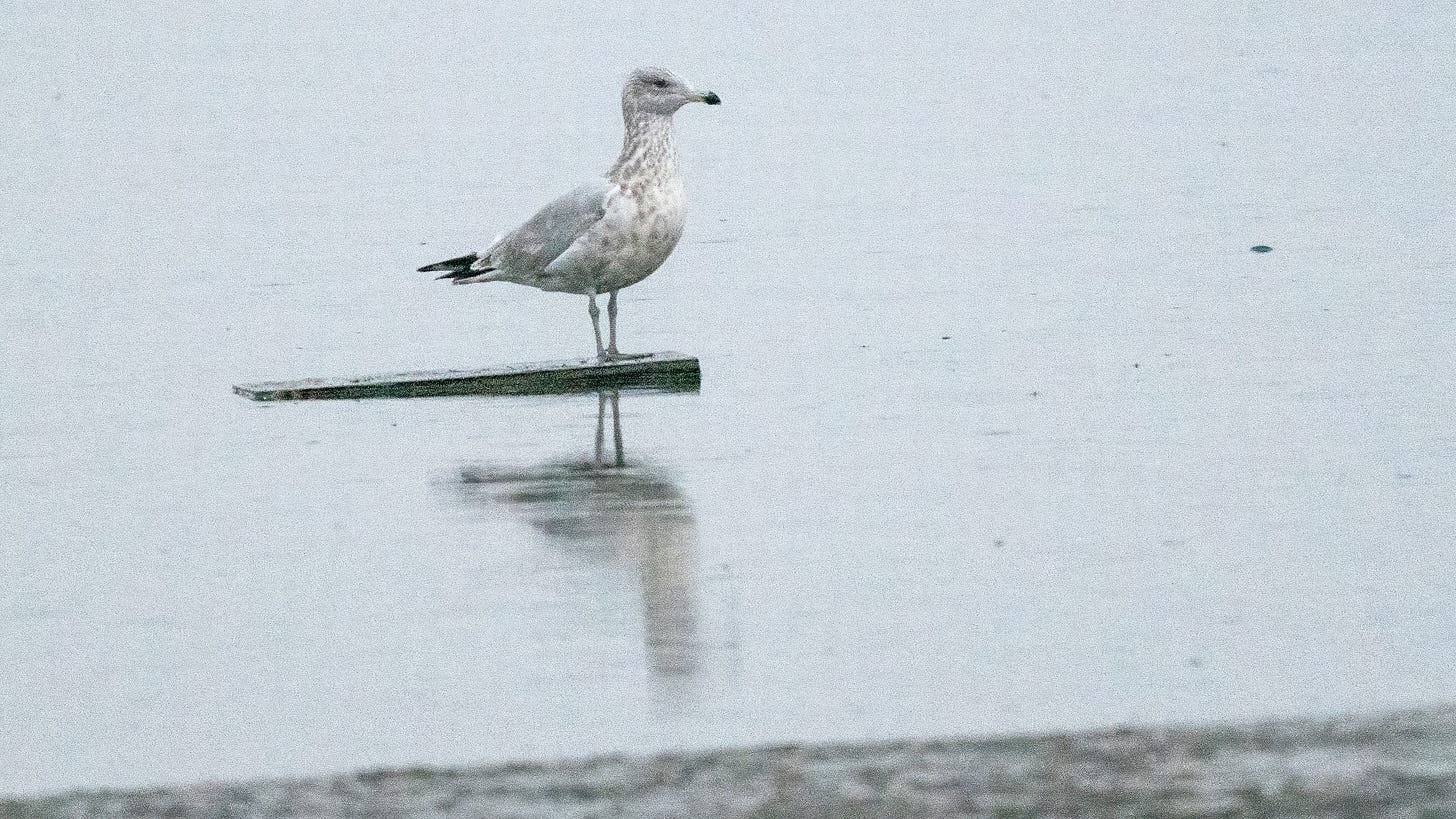
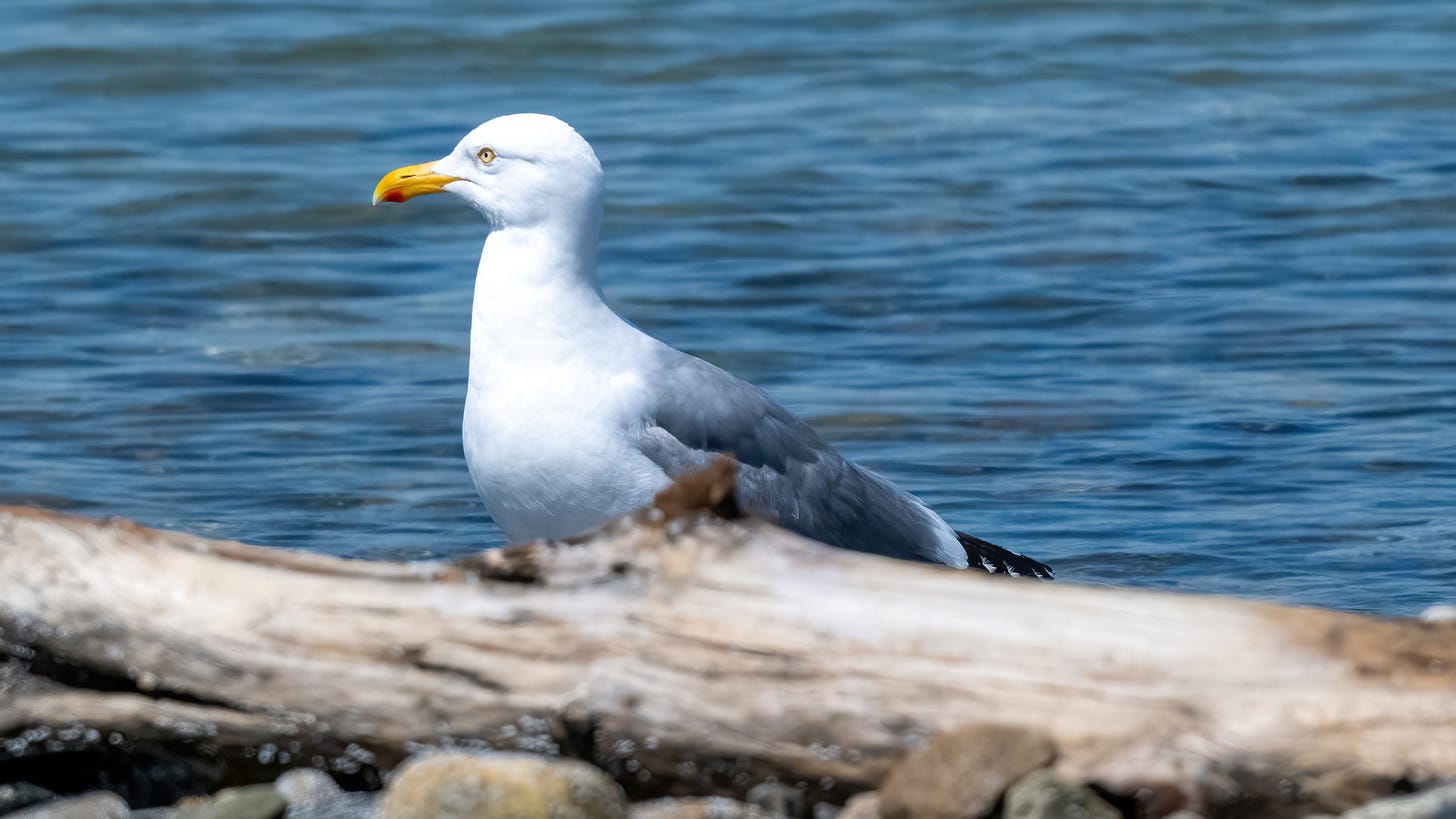

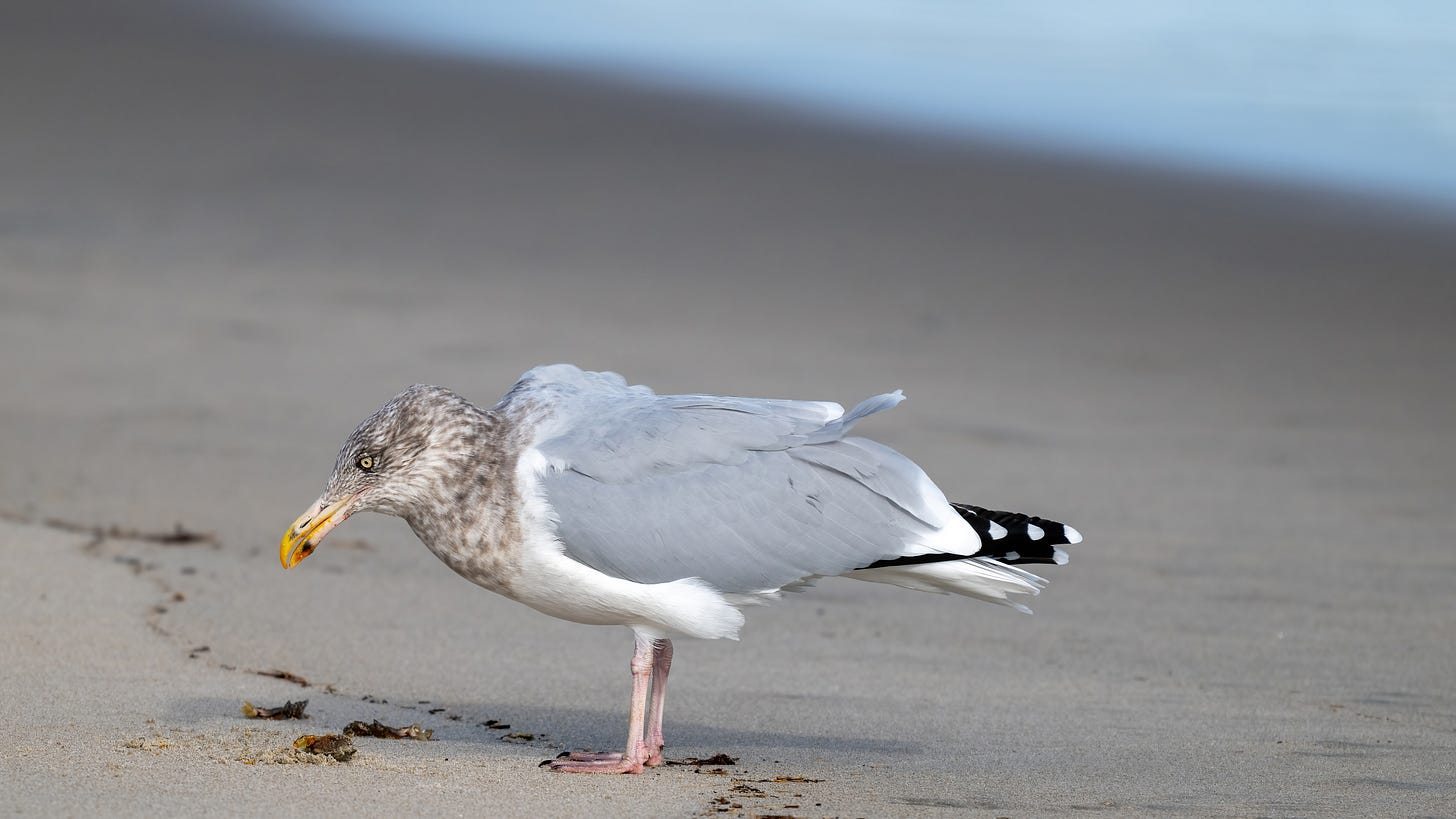
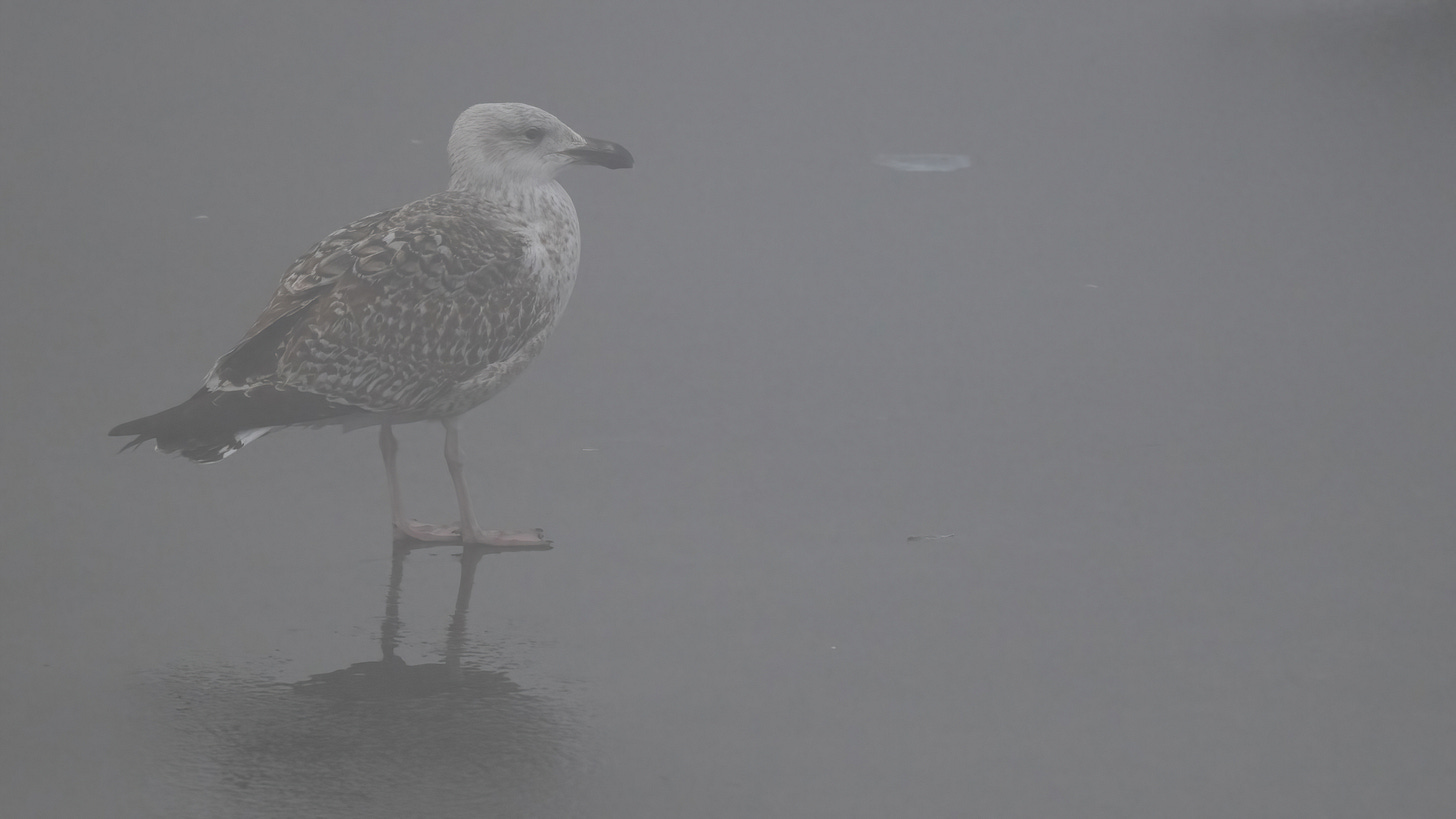

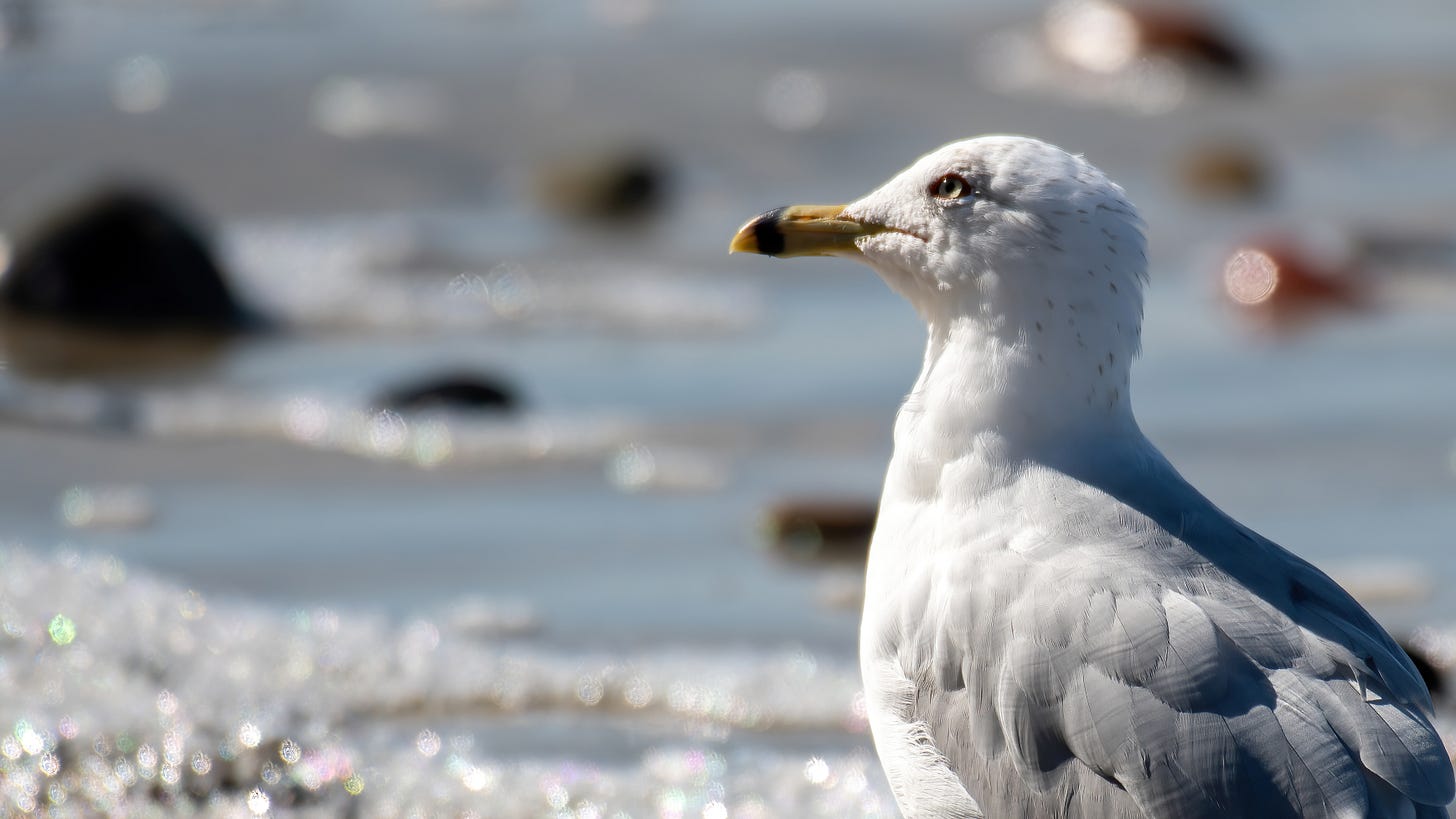
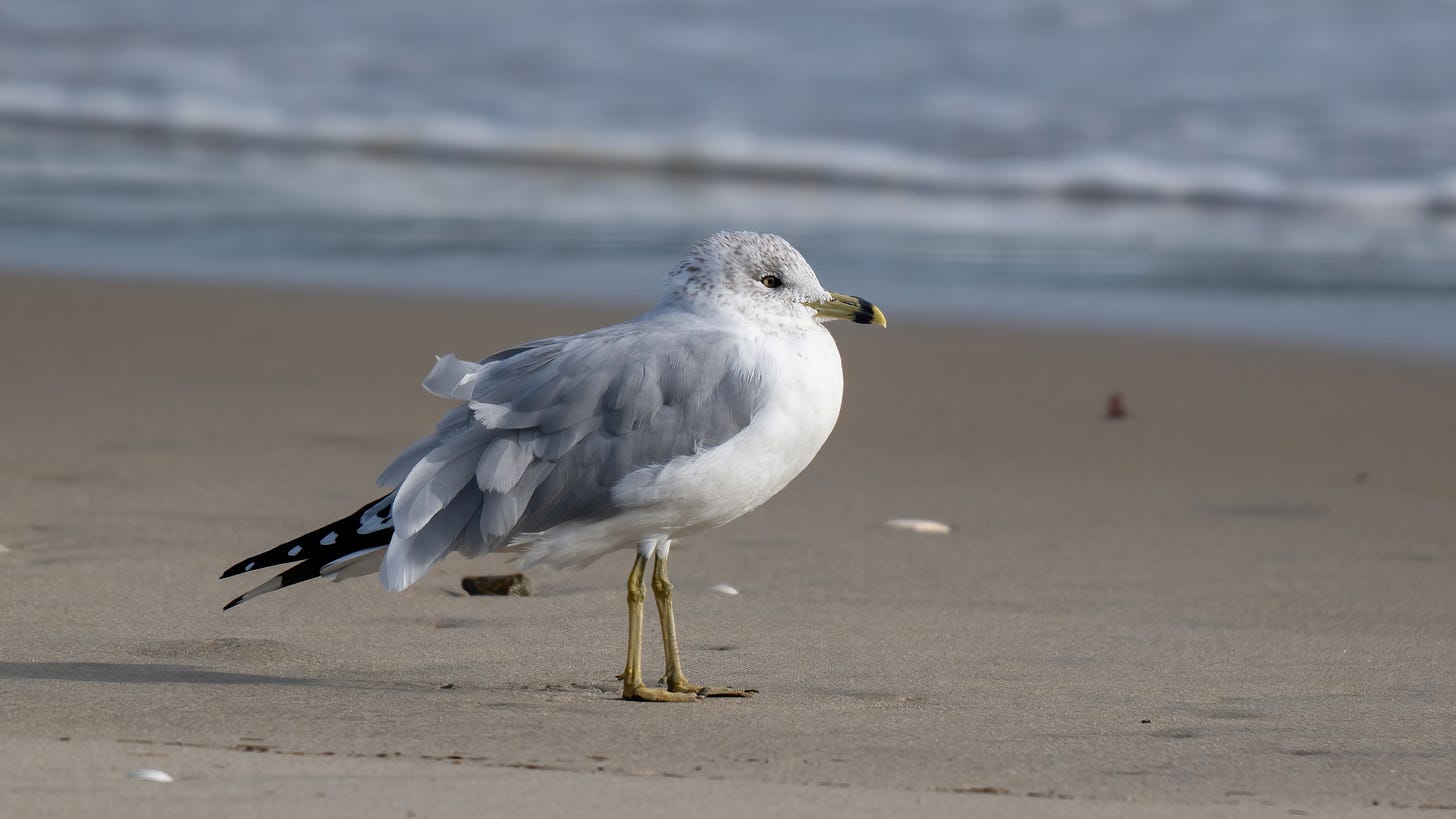
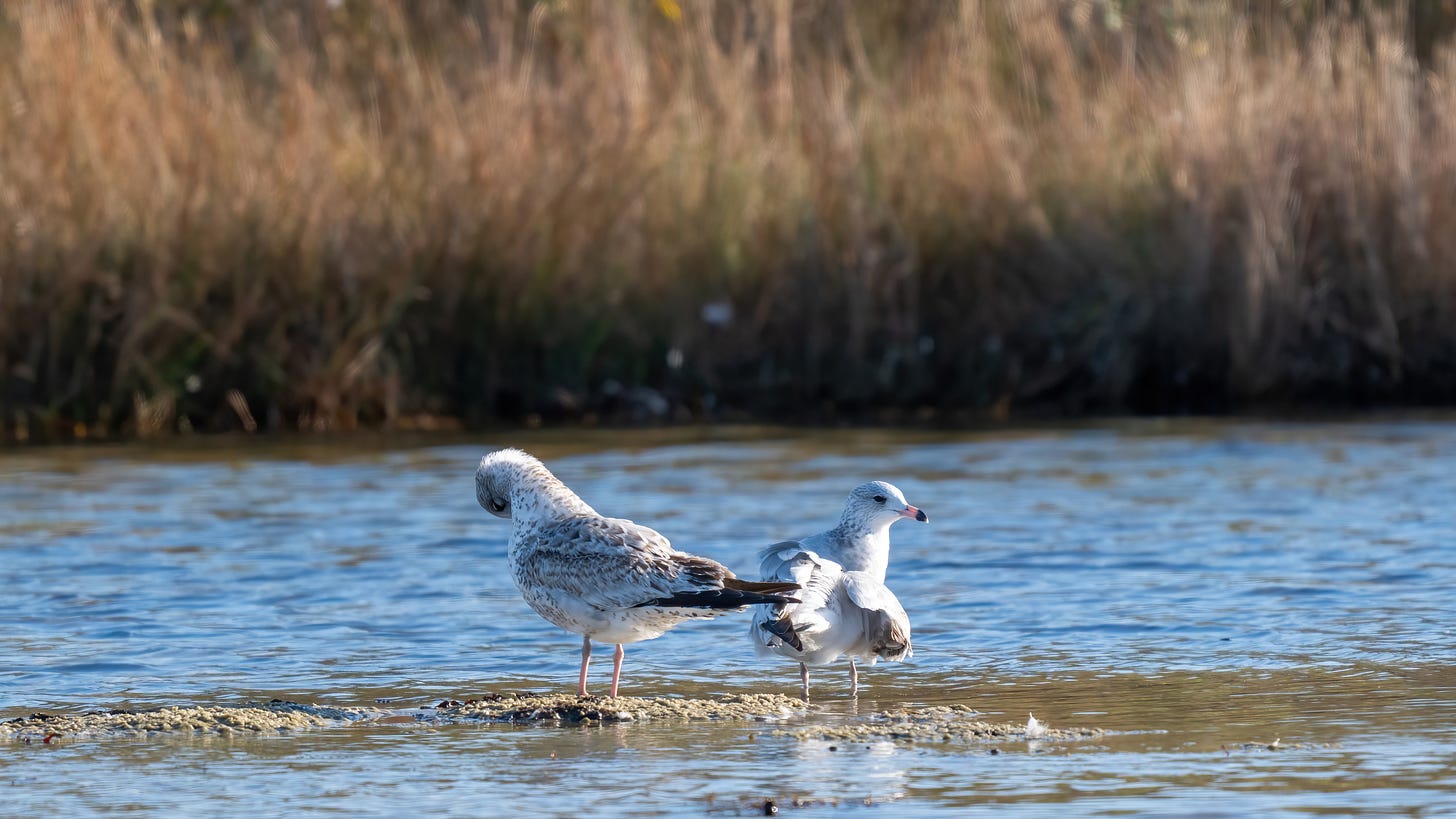
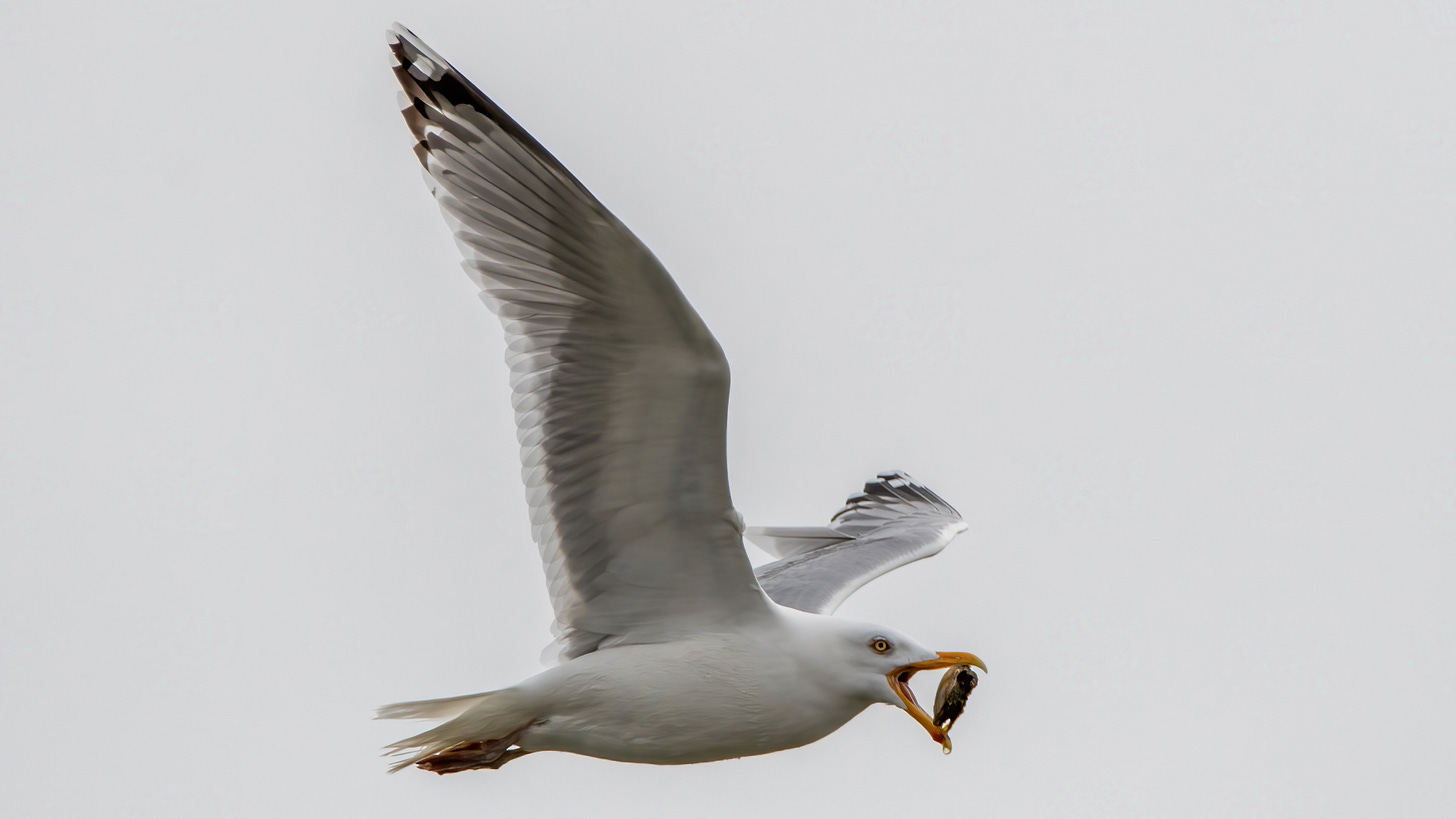
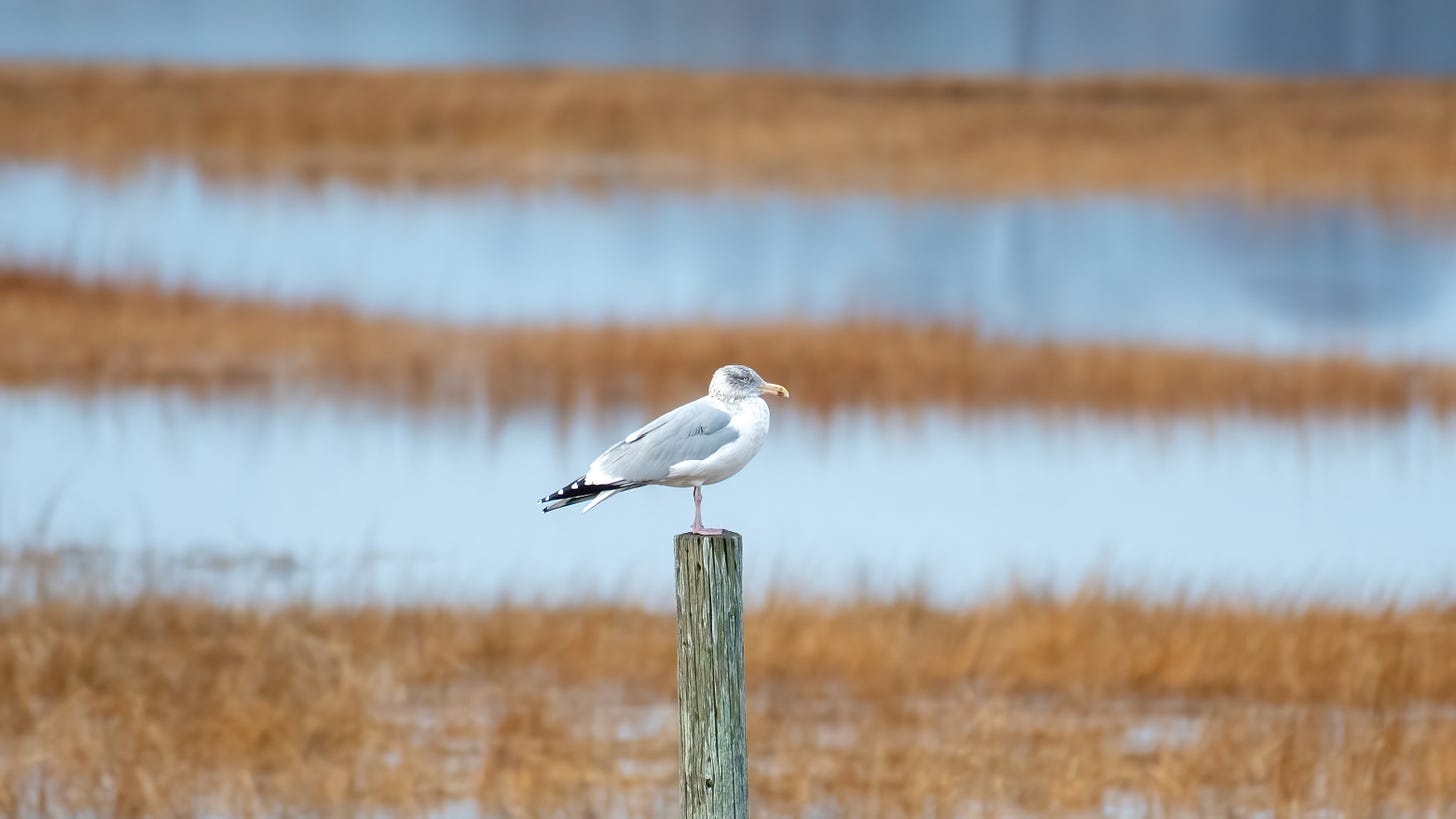

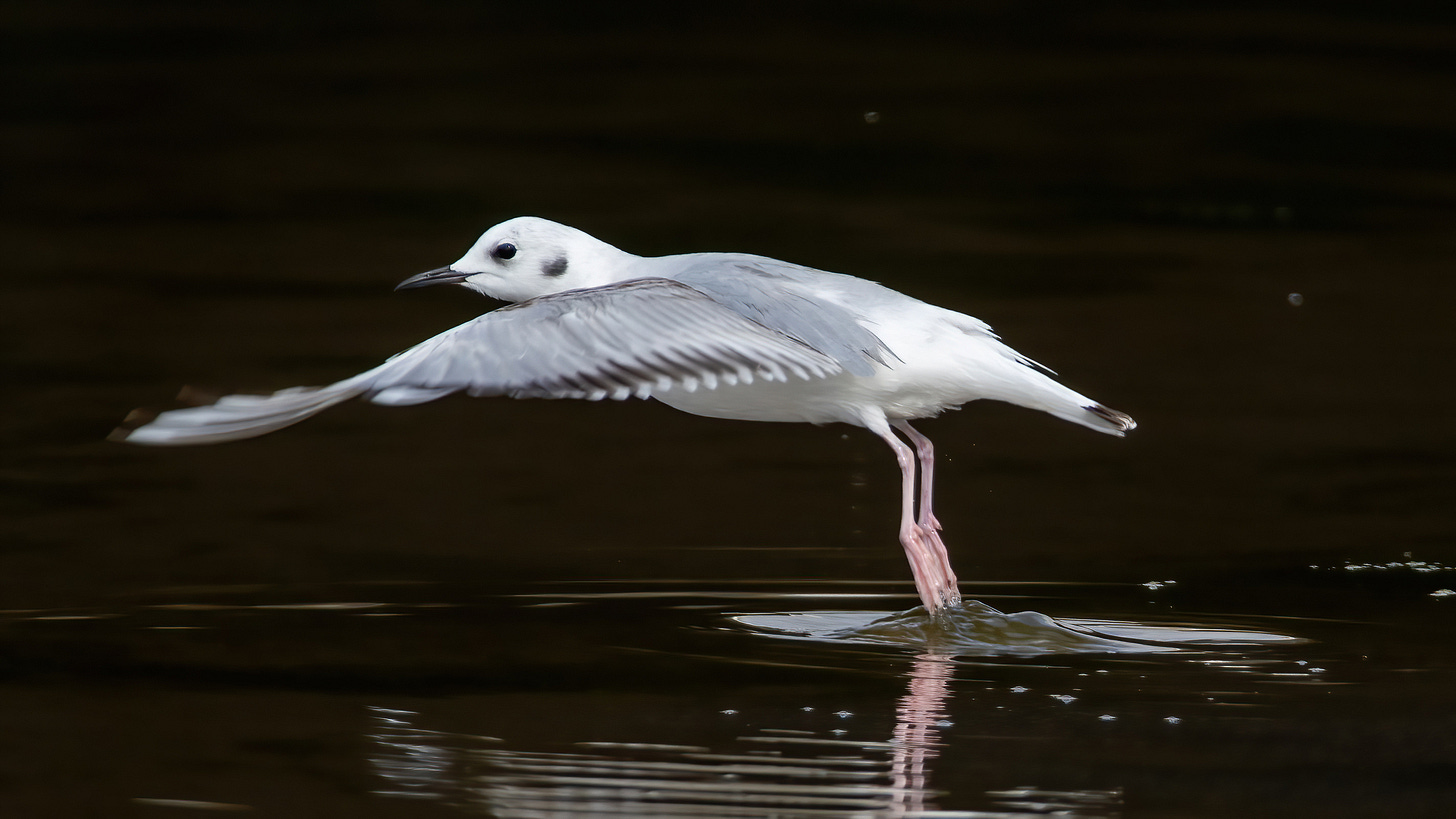
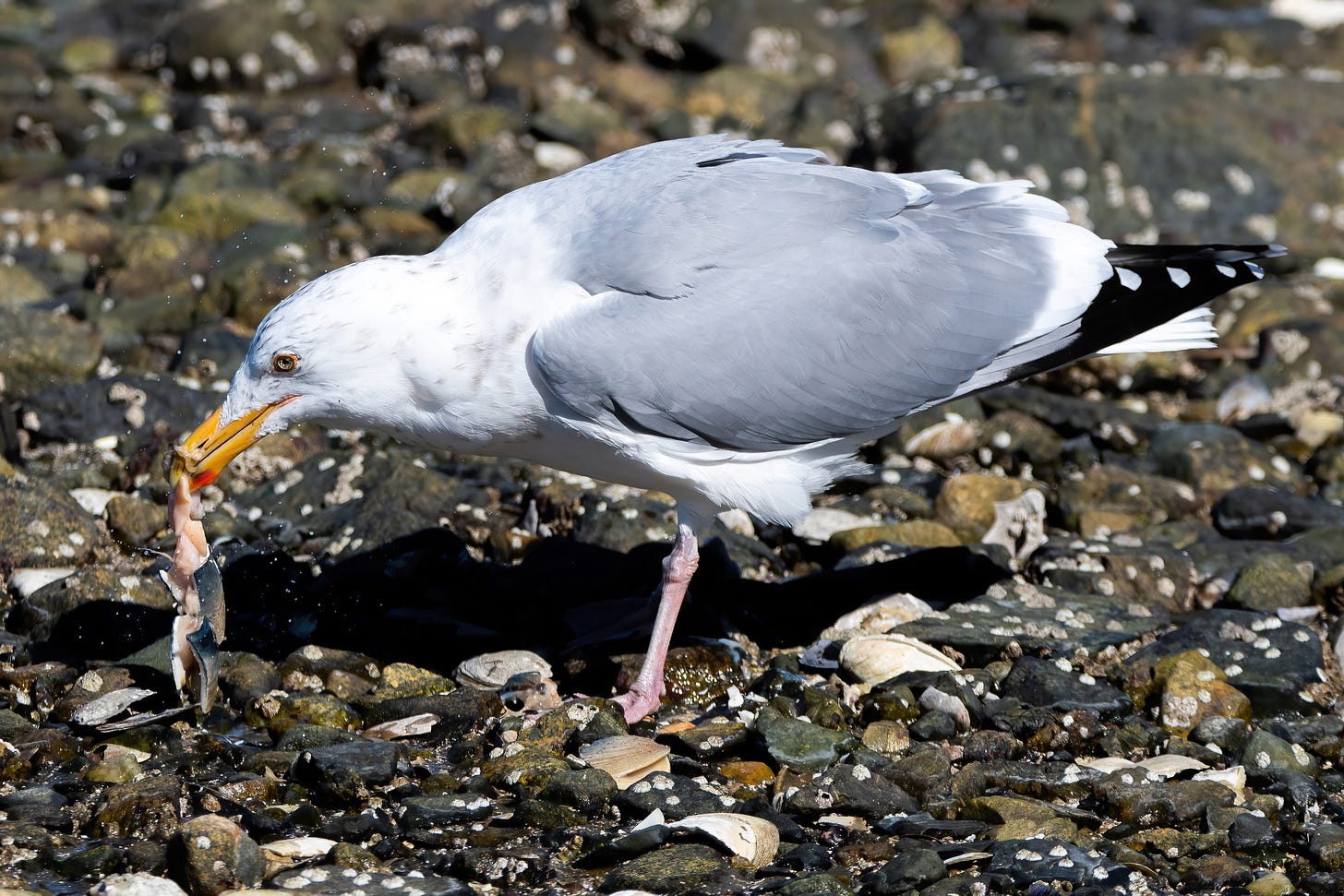



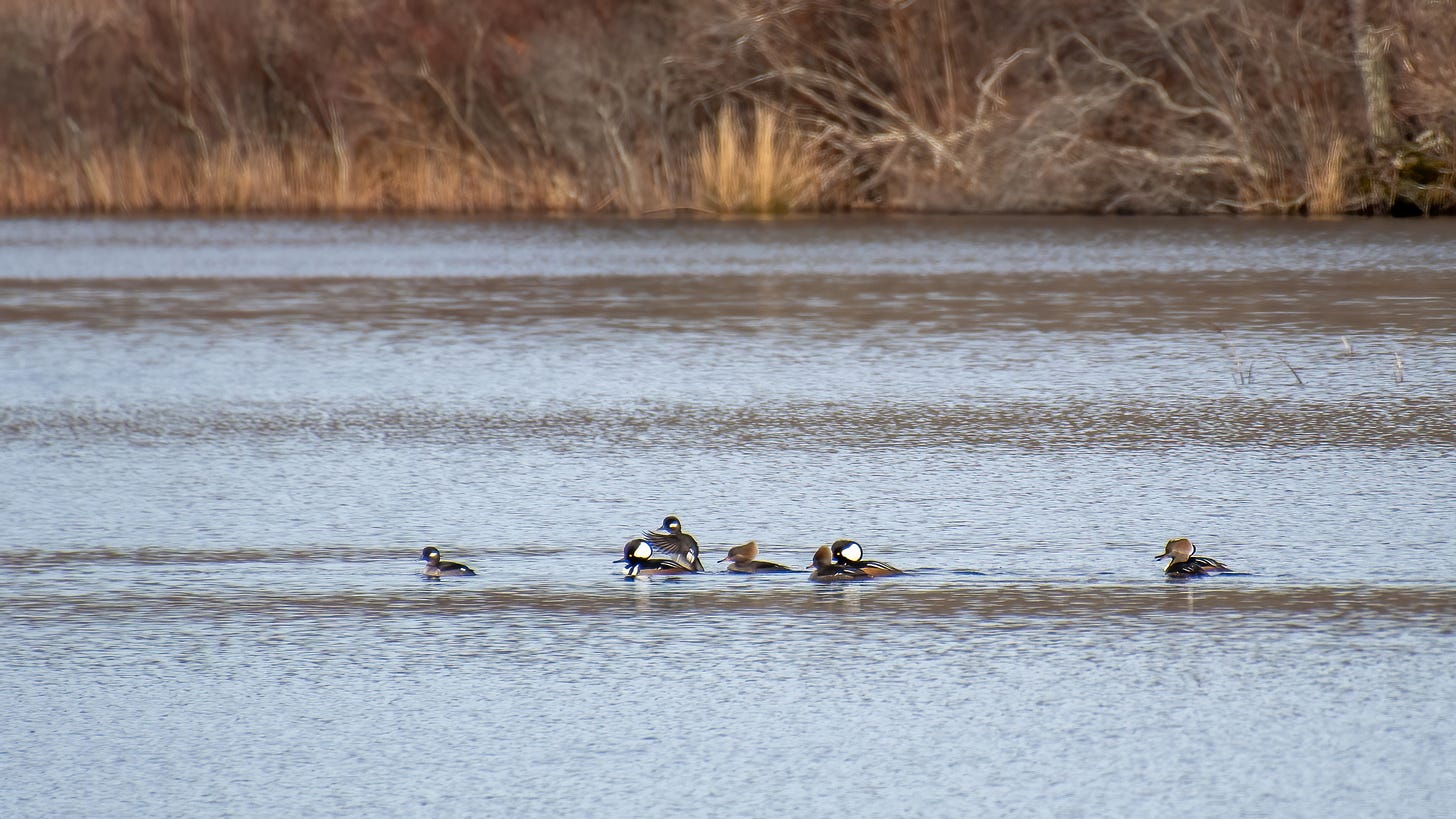



Those photos of flying gulls with crabs are one in a million. Brilliant shots, James! On the bay where I live, Larus Occidentalis ( Western gulls) and Quercus Agrifolia ( California Live Oak) abound! One of the funniest bird sights I remember was a young western gull with all his brown-spot feathers chasing his sleek gray and white mother around the harbor gangplanks screeching loudly, standing accusingly in front of her, beak wide open for food - and he was as big as she was! So comical! Reminded me of some of the 30-year-olds who still live with their parents today, expecting free food, laundry, and everything else. When is the fledge-by date?
That top photo is a winner!